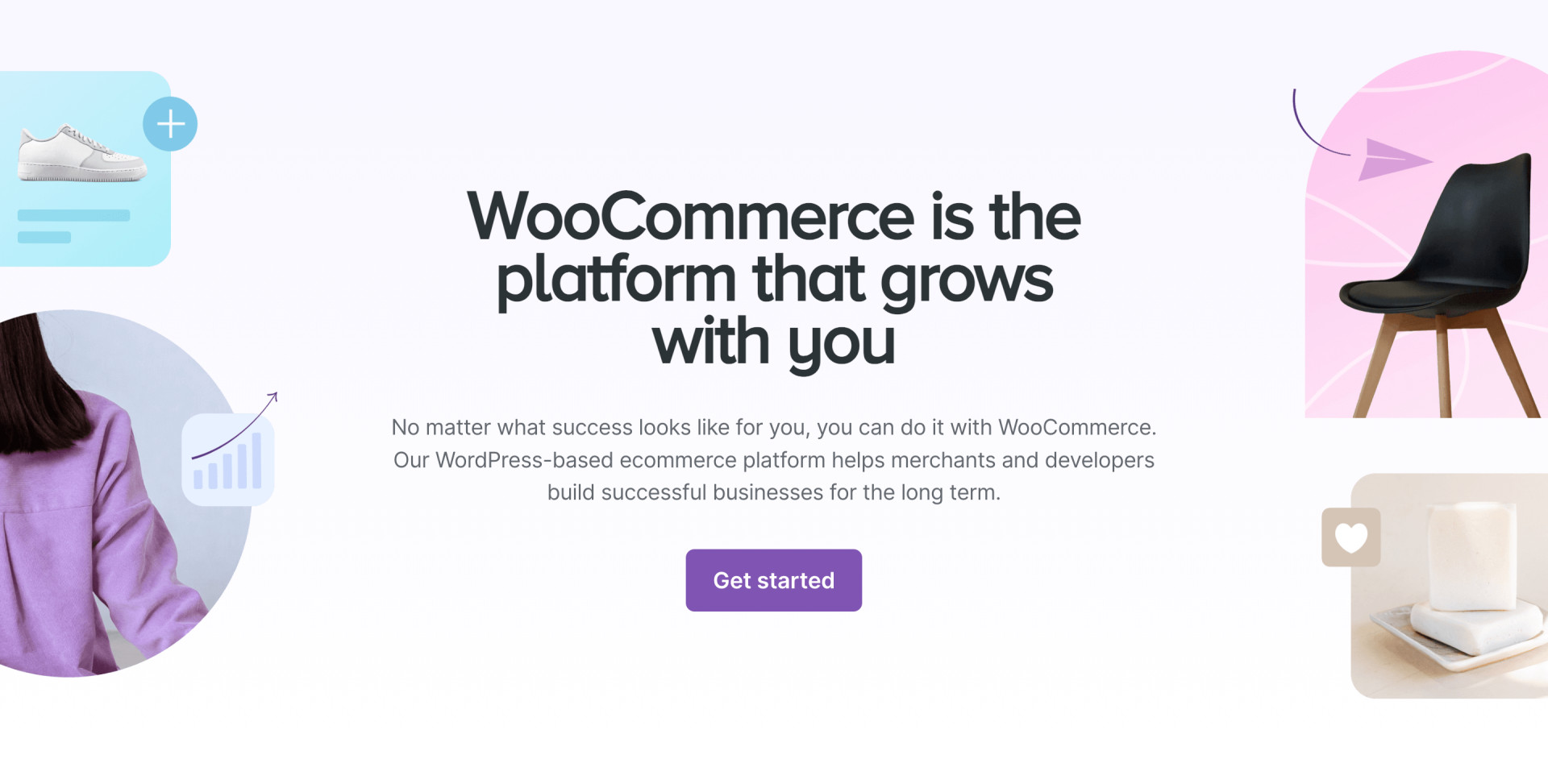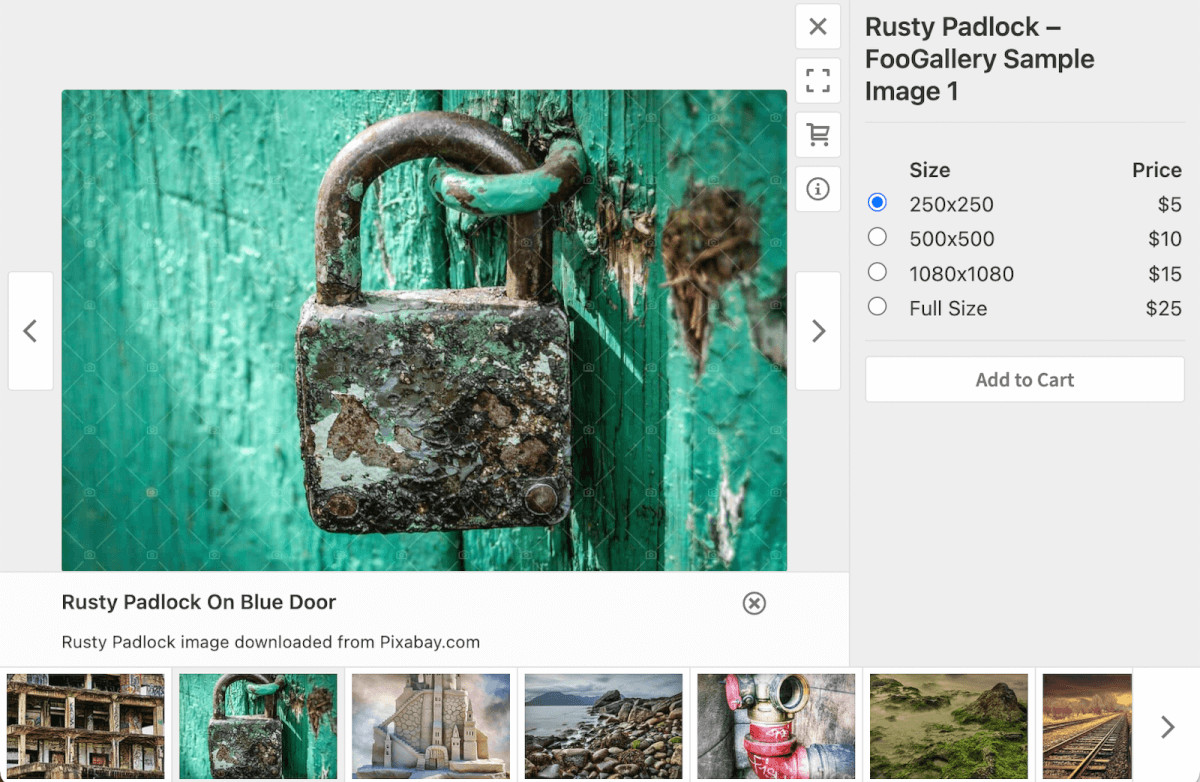If you’re passionate about photography and looking to turn your hobby into a profitable venture, selling photos online is a fantastic opportunity. However, navigating the online landscape and achieving success can be challenging. This guide is your definitive resource, packed with actionable tips and essential information to help you effectively sell your photography online.
We’ve structured this guide into two key sections to provide a comprehensive understanding:
Part One: Choosing the Right Online Platform to Sell Photos
Part Two: Beginner-Friendly Tips for Selling Photos Online
Part One: Top Platforms for Selling Your Photos Online
One of the first and most critical decisions for any photographer looking to sell their work online is choosing the right platform. The digital marketplace offers a plethora of options, each with its own set of features, benefits, and drawbacks. While numerous platforms cater to both seasoned professionals and beginners eager to monetize their images, selecting the right one can significantly impact your brand control and income potential.
Before we dive into the specifics, here’s a comparative overview of leading photography-friendly platforms:
| Platform | Initial Cost | Transaction Fees | Category | Functionality | Relevant Features |
|---|---|---|---|---|---|
| WordPress | Varies (Hosting & Domain) | Varies (Payment Gateway Fees) | CMS | Website building, blog integration, SEO tools | Full control, SEO tools, extensive plugin ecosystem, various gallery plugins |
| Shopify | $29/month (Basic Plan) | 2.9% + 30¢ per transaction | Ecommerce platform | Online store creation, product management, marketing tools | User-friendly setup, robust marketing tools, scalable for growth |
| Adobe Stock | Free to join | 15% – 35% commission | Stock Photo Marketplace | Sell/license stock photos, integrated with Adobe Creative Cloud | Vast audience reach, seamless Adobe Creative Cloud integration, established marketplace |
| Shutterstock | Free to join | 15% – 40% commission | Stock Photo Marketplace | Sell/license stock photos, large audience, global reach | Massive global audience, high visibility, contributor-friendly resources |
| Alamy | Free to join | 40% commission | Stock Photo Marketplace | Sell/license stock photos, editorial and commercial content | Competitive commission rates, editorial content focus, global distribution |
| iStock Photo | Free to join | 15% – 45% commission | Stock Photo Marketplace | Sell/license stock photos, diverse marketing tools | Reputable platform, diverse marketing and promotional tools, Getty Images affiliation |
| Getty Images | Free to join | 20% commission | Stock Photo Marketplace | Premium stock photo sales, high visibility | Prestigious platform, high visibility to premium clientele, industry-leading reputation |
| 500px | Free to join | 60% commission (non-exclusive) | Photography-Sharing Platform | Photo sharing, community engagement, licensing options | Vibrant photography community, licensing opportunities, portfolio showcase |
| PhotoShelter | $10/month (Basic Plan) | 8% – 10% per sale | Photography-Sharing Platform | Create custom photography websites, client proofing | Photography-centric website builder, client management tools, professional features |
| Etsy | $0.20 per listing | 6.5% transaction fee | Ecommerce platform | Sell handmade/vintage items, niche market focus | Niche marketplace, strong community for unique items, diverse customer base |
Let’s explore each of these platforms in detail to help you make an informed decision.
The Best Platform for Selling Photos Online: Your Own Website
Establishing your own photography website provides unparalleled full control over your online presence and sales process. This approach offers the greatest potential for cultivating a distinctive brand and fostering a loyal customer base. By building your own platform, you are not just selling photos; you are building a photography business.
Consider the following pros and cons when contemplating creating your own photography website:
Pros
- Complete Control: You have absolute authority over every aspect of your website, from design and branding to pricing and sales policies. This level of control is crucial for establishing a unique brand identity.
- Zero Commission Fees: Retain 100% of your sales revenue, aside from standard payment processing fees. This maximizes your profit margins and allows for more financial flexibility.
- Extensive Customization: Tailor your website to perfectly reflect your brand aesthetic and showcase your photographic work in the most compelling way. Design a site that truly represents your artistic vision.
- SEO Advantages: Optimize your website for search engines to significantly increase organic traffic. Effective SEO strategies can drive consistent, targeted visitors to your site.
- Direct Customer Relationships: Cultivate and nurture direct relationships with your customers. This direct interaction allows for personalized marketing efforts and fosters repeat business through customer loyalty.
Cons
- Initial Setup and Ongoing Maintenance: Requires time investment and potentially technical skills to set up and maintain. This includes managing hosting, security updates, and technical troubleshooting.
- Financial Investment: Involves ongoing costs for hosting, domain registration, themes, and plugins. These expenses are necessary for maintaining a professional and functional website.
- Marketing Responsibility: You are solely responsible for driving traffic to your website. This demands significant effort in marketing and SEO strategies to build visibility.
- Building Audience from Scratch: Unlike established marketplaces, you start with no built-in audience. Building a customer base takes time and consistent effort.
- Customer Support Management: You are responsible for providing all customer support and resolving any issues. Excellent customer service is essential for building trust and positive reputation.
For photographers seeking to build their own website, WordPress and Shopify stand out as leading platforms. Let’s examine each in detail.
1. WordPress (With WooCommerce)
 woocommerce
woocommerce
Our top recommendation for photographers aiming to maximize control and profitability is to establish your own WordPress website. WordPress, a versatile Content Management System (CMS), is not only cost-effective to set up but also incredibly powerful and customizable.
Setting up a WordPress site involves securing managed WordPress hosting, selecting a visually appealing theme, and integrating essential plugins. The costs associated with these elements are typically structured as reasonable annual or monthly fees.
To enable seamless transaction processing on your WordPress site, we highly recommend integrating WooCommerce, a leading e-commerce plugin. WooCommerce provides comprehensive e-commerce functionalities essential for selling your photos directly from your site, including product listings, shopping carts, secure checkout processes, and order management.
A primary advantage of using WordPress and WooCommerce is the unparalleled ownership you retain over your website and all its content. You avoid commission fees on your sales, maximizing your earnings. You also have the freedom to set your own pricing, unlike many platforms that dictate pricing structures.
While WordPress and WooCommerce provide robust tools, it’s important to note that marketing and distribution are your responsibilities. However, WordPress’s inherent SEO-friendly architecture allows for effective content optimization to attract organic traffic from search engines, helping potential buyers discover your photography.
Furthermore, WooCommerce’s extensive marketing integrations empower you to connect with various marketing platforms. These integrations are crucial for reaching your target audience across different online channels. Useful integrations for photographers selling on WooCommerce include email marketing tools, social media integrations, and advertising platforms.
For photographers opting for a WordPress site, we strongly recommend utilizing a performance-optimized gallery plugin like FooGallery. A robust gallery plugin is indispensable for photographers, allowing you to create visually stunning and customizable photo galleries anywhere on your website. FooGallery excels in providing a user-friendly interface, stunning gallery layouts, and a focus on website speed and SEO performance, ensuring your photos are displayed beautifully and effectively.
The Best WordPress Gallery Plugin
FooGallery is an easy-to-use WordPress gallery plugin, with stunning gallery layouts and a focus on speed and SEO.
Here’s an example of how a photography website can look with the integration of FooGallery and WooCommerce, creating a seamless and visually engaging shopping experience for your customers.
 sell photos online using FooGallery and WooCommerce
sell photos online using FooGallery and WooCommerce
For a detailed, step-by-step guide on setting up your photography website, explore our comprehensive tutorial on selling images with WordPress, FooGallery, and WooCommerce.
2. Shopify
 Shopify
Shopify
Shopify stands as another leading e-commerce platform, offering a robust solution for photographers to create their own photography website. Renowned for its user-friendliness and comprehensive e-commerce features, Shopify provides a streamlined path to selling photos online.
Shopify’s key advantages include its straightforward setup process, a wide array of professional themes, extensive customization capabilities, and a rich app store offering additional functionalities. Compared to WooCommerce, Shopify is generally more expensive, but it provides an all-in-one solution that simplifies website management.
Shopify offers various pricing plans, starting with the Basic plan at $29 per month. This plan encompasses all the essential tools needed to launch and manage your online store. While upgrading to higher-tier plans may not be necessary for selling photos initially, they offer advanced features like enhanced reporting and lower transaction fees for larger sales volumes.
Hosting is seamlessly managed by Shopify, eliminating the need for you to handle server maintenance or security. Shopify also provides a diverse selection of themes and customization options, allowing you to design a professional and visually captivating storefront to showcase your photography.
Shopify’s transaction fees are structured at 2.9% + 30¢ per sale if you utilize Shopify Payments, their in-house payment gateway. Opting for an external payment gateway may incur additional transaction fees, which should be factored into your pricing strategy.
Top Stock Photo Marketplaces for Selling Photos
Stock photo marketplaces provide an excellent avenue for photographers to sell high-quality images to a broad audience, including businesses, marketers, and content creators. These platforms act as intermediaries, connecting photographers with buyers but operate under specific terms and conditions set by the marketplace. Typically, images must meet certain quality and technical requirements, and photographers earn a commission on each sale facilitated through the platform.
Here’s a summary of the pros and cons of selling your photos on a stock photo platform:
Pros:
- Extensive Customer Base: Access to a global audience of potential buyers, significantly increasing the likelihood of sales and broader market reach.
- Passive Income Potential: Generate passive income once your photos are uploaded, approved, and available for licensing. This allows for continuous earnings from a single upload effort.
- High Visibility: Photos are showcased to millions of potential buyers actively searching for images, maximizing exposure and discoverability.
- Marketing Support: Platforms often invest in marketing their libraries, which indirectly promotes your photos to a wider audience and drives traffic to the marketplace.
- Contributor Resources: Many platforms offer valuable tools and resources to assist contributors in succeeding, including performance analytics, trend insights, and contributor communities.
Cons:
- Commission Fees: Platforms deduct a commission on each sale, typically ranging from 15% to 45%. These commissions impact your net earnings per photo sold.
- Intense Competition: High competition among a vast number of photographers can make it challenging for your photos to stand out and gain visibility.
- Limited Pricing Control: Prices are generally determined by the platform, limiting your control over how your work is valued and sold.
- Rigorous Approval Process: Photos undergo a stringent approval process to ensure they meet quality and technical standards, which can be time-consuming and may result in rejections.
- Exclusive Agreements: Some platforms offer exclusive agreements that may restrict your ability to sell the same photos on other platforms, limiting distribution flexibility.
If selling through stock photo marketplaces aligns with your business objectives, consider these popular platforms:
3. Adobe Stock
Adobe Stock offers a free entry point for photographers to sell their work. You retain the copyright to your images when you upload them, but Adobe Stock secures a license to sell them to their users. However, there are specific criteria your content must meet. All submissions undergo a review process to ensure they meet Adobe Stock’s standards, including high image quality, accurate keyword tagging, legal compliance, and commercial viability. Additionally, images featuring recognizable individuals or private properties necessitate signed model or property releases to comply with legal requirements.
Regarding compensation, Adobe Stock’s royalty rates start at 33% of the sale price. Payment requests can be made once your accumulated royalties reach a minimum of $25, and at least 45 days have passed since your initial sale. This payment structure is important to consider for cash flow planning.
4. Shutterstock
 Shutterstock
Shutterstock
Shutterstock is another leading platform for photographers to sell their images online. Similar to Adobe Stock, you must possess full ownership or copyright of the images you submit and provide necessary release forms for any recognizable models, private properties, artwork, or trademarks depicted in your photos.
While you maintain ownership of your photos, by contributing to Shutterstock, you grant them permission to license your images to their customers. Your account activity is monitored to ensure adherence to their guidelines and regulations, including the use of relevant and accurate keywords to describe your images for better searchability.
Shutterstock employs a tiered royalty payout system based on the total number of image licenses you sell over time. This structure is designed to reward contributors who achieve higher sales volumes with progressively better royalty rates:
- Level 1: 15% royalty rate for up to 100 image licenses sold cumulatively.
- Level 2: 20% royalty rate for 101 to 250 licenses sold.
- Level 3: 25% royalty rate for 251 to 500 licenses sold.
- Level 4: 30% royalty rate for 501 to 2,500 licenses sold.
- Level 5: 35% royalty rate for 2,501 to 25,000 licenses sold.
- Level 6: 40% royalty rate for over 25,000 licenses sold.
Video royalties follow a similar tiered structure, although the license thresholds for each level differ. Payments are issued once your earnings reach a minimum threshold of $35.
This tiered system implies that earning substantial income on Shutterstock is more challenging for photographers who are just starting out or have smaller portfolios. It is more rewarding for those who have built up a significant portfolio and consistently generate high sales volumes.
5. Alamy
Alamy is a reputable stock photography platform distinguished by its generous commission structure and diverse content range, making it a popular choice among photographers. Alamy is particularly recognized for accepting a wide variety of content, including both commercial and editorial images.
Alamy allows you to sell various types of media, including stock photos, panoramic images, vector graphics, and videos. Their contributor agreement enables you to submit content that meets their quality standards, which Alamy then markets and licenses on your behalf. Importantly, Alamy emphasizes that contributors retain control over their submissions, and they do not edit submitted content, preserving the photographer’s artistic intent.
Alamy offers a competitive royalty structure that is particularly favorable to contributors:
- Non-exclusive contributors: Earn up to 40% commission on each sale, providing a higher base rate compared to many competitors for non-exclusive content.
- Exclusive contributors: Can earn up to 50% commission for images made exclusively available through Alamy, incentivizing platform loyalty with increased earnings.
Additionally, Alamy provides a unique 100% commission scheme for students who submit their work through their dedicated student program, supporting emerging photographers and fostering educational opportunities.
6. iStock Photo
 iStock by Getty Images
iStock by Getty Images
iStock, a subsidiary of Getty Images, positions itself as a platform “created by creatives, for creatives.” It provides a range of benefits and opportunities for photographers, particularly those focused on producing high-quality and distinctive content. iStock is well-suited for photographers aiming to sell photos online and reach a diverse customer base.
Joining iStock as a contributor is free. The application process involves submitting samples of your work for review. Upon acceptance, you can begin uploading and selling your photos through the platform without any upfront costs. This barrier-free entry makes it accessible for photographers at various stages of their careers.
iStock operates on a royalty-based payment system, where contributors earn a percentage of the sale price of their photos. The royalty rates vary based on contributor exclusivity:
- Non-exclusive contributors: Earn between 15% and 20% royalties on each sale, providing a base earning potential for contributors who also distribute their work elsewhere.
- Exclusive contributors: Earn between 25% and 45% royalties, with rates scaling based on sales volume and content type. Exclusive contributors benefit from higher royalty rates and enhanced visibility and marketing support from iStock.
Exclusive contributors generally receive more favorable royalty rates and benefit from increased exposure and marketing efforts by iStock, making it a more lucrative option for those willing to commit exclusively to the platform.
7. Getty Images
Getty Images boasts a vast user base exceeding 800,000, offering photographers an extensive audience to market and sell their photos and videos. To become a contributor, you must apply by submitting original content through their dedicated app. Upon acceptance, you will receive a non-exclusive agreement to begin contributing.
Content contributed to Getty Images may also be featured on iStock, broadening potential market reach. Royalty rates for contributors range from 15% to 45% on licensed content, with opportunities to earn higher commissions by transitioning to an exclusive contributor agreement.
The standard royalty rates for photographers on Getty Images are structured as follows:
- Royalty-free still images: 20% royalties on each sale, providing a baseline earning for standard stock image licenses.
- Royalty-free video clips: 25% royalties on each sale, slightly higher to reflect the potentially greater value of video content.
Contributors retain the copyright to all their content, ensuring ownership and control over their creative work.
While Getty Images offers significant market reach and prestige, it’s important to note that building substantial earnings can take time due to the competitive nature of the platform. Success requires selling a high volume of stock images to generate significant income, highlighting the need for a large and commercially appealing portfolio.
Photography-Sharing Platforms
Photography-sharing platforms differ fundamentally from traditional stock photo websites. They allow any photographer to join and create a photography portfolio without undergoing a rigorous approval process. While these platforms also take a commission on photo sales, they offer a more community-focused environment. However, competition can be intense as photographers are vying for visibility among a large pool of users.
8. 500px
 500px
500px
500px is a well-known photography-sharing platform that integrates community engagement with a marketplace for selling images. This dual approach makes it an attractive option for photographers seeking to both showcase their work and monetize their talent.
Joining 500px is free, with options for both free and paid membership plans. The free plan includes limitations on the number of photos you can upload, while paid plans, starting at $5 per month, offer expanded features such as unlimited uploads, advanced analytics, and priority support.
Getting started on 500px is straightforward: you can download their app and begin marketing yourself as a professional photographer within their established community. However, with a community of over 18 million users, gaining prominence and standing out requires dedicated effort in community engagement and portfolio promotion.
500px offers royalties on sales, with higher rates available for photographers who choose exclusive licensing through their platform. The royalty payment system is primarily facilitated through exclusive distribution partnerships with Getty Images and VCG (Visual China Group).
- Non-exclusive contributors: Earn 30% royalties on each sale, providing a base rate for contributors who maintain flexibility in distributing their work.
- Exclusive contributors: Earn 60% royalties, a significantly higher rate, but require that the licensed photos are exclusive to the 500px platform, incentivizing exclusivity.
9. PhotoShelter
 PhotoShelter
PhotoShelter
PhotoShelter is a cloud-based platform designed specifically for photographers to store, promote, and sell their photos online. It provides tools to create professional portfolios, manage pricing, sell prints or image licenses, and securely deliver files to clients. However, the features and cloud storage capacity are plan-dependent.
PhotoShelter offers a tiered pricing structure with three main plans, each providing different levels of storage and features tailored to varying professional needs:
- Basic plan: $10/month (billed annually), including 4GB of cloud storage, suitable for photographers starting out or with smaller portfolios.
- Standard plan: $25/month (billed annually), offering 100GB of cloud storage, designed for growing portfolios and active selling.
- Pro plan: $45/month (billed annually), providing unlimited storage, aimed at professional photographers with extensive portfolios and high-volume sales.
PhotoShelter also applies transaction fees based on your chosen plan:
- Pro plan: 8% transaction fee on sales, the lowest fee, reflecting the plan’s premium features.
- Standard plan: 9% transaction fee, slightly higher than the Pro plan.
- Basic plan: 10% transaction fee, reflecting the entry-level nature of the plan.
- Starter plan: 30% transaction fee, associated with their most basic plan, designed for initial exploration.
Ecommerce Marketplace Platforms
Another viable option for selling your photos online is through popular e-commerce marketplaces. These platforms are designed to facilitate the sale of a wide range of products, including photographs, directly to consumers. Marketplaces like Etsy provide established infrastructures and broad customer bases, but they also come with specific considerations for photographers.
Similar to other platforms, selling on e-commerce marketplaces involves costs, including monthly fees for maintaining a store and transaction fees on each sale. A potential drawback is that the primary audience on these platforms may not be specifically searching for photography, which can narrow your target market compared to photography-specific platforms.
Here are some of the pros and cons of utilizing e-commerce marketplace platforms:
Pros
- Vast Customer Base: Access to an enormous audience of potential buyers, simplifying customer reach without extensive independent marketing efforts.
- Ease of Use: Platforms are designed to be user-friendly, enabling sellers to quickly set up shops and manage listings with minimal technical expertise required.
- Integrated Payment Processing: E-commerce marketplaces offer built-in payment systems, streamlining the process of accepting various payment methods from customers securely.
Cons
- Platform Fees: Selling photos involves various fees, including listing fees, transaction fees per sale, and payment processing fees, which can impact profitability.
- High Competition: The large number of sellers on these platforms creates intense competition, making it challenging to differentiate your offerings and attract buyers effectively.
- Limited Customization: While some customization options are available, they are generally limited compared to building a standalone e-commerce website, restricting brand expression.
- Branding Constraints: Establishing a unique brand identity can be difficult due to the platform’s standardized listing formats and overarching branding, diluting individual brand visibility.
- Policy Compliance: Sellers must strictly adhere to the platform’s evolving policies and rules, which can impact sales strategies and operational flexibility.
Platforms like Etsy, a well-known online marketplace, are examples of e-commerce platforms that photographers can utilize.
10. Etsy
While Etsy has gained traction among photographers for selling prints, digital downloads, and photo-related merchandise, it may be challenging to cultivate an audience specifically interested in photography as fine art or stock imagery. Etsy’s primary focus is on handmade, vintage, and craft supplies, which may not align perfectly with all types of photography sales.
Setting up a shop on Etsy is relatively affordable, with a straightforward fee structure:
- Listing fee: $0.20 per item listed, charged for each new listing and renewed every four months if the item remains unsold.
- Transaction fee: 6.5% of the total sale price, calculated on the total amount including shipping costs.
- Payment processing fee: Varies by country; in the U.S., it is 3% + $0.25 per transaction, applied to each completed sale.
These fees represent the main costs associated with selling on Etsy, making it financially accessible to start selling.
Given its niche focus, Etsy is arguably more suitable for photographers looking to establish a photography side business or diversify income streams away from a primary photography website. If you choose this path, other popular platforms such as eBay and Amazon Handmade are also available, each with its own audience and fee structures.
Part Two: Top Tips For Selling Photos Online
Considering the diverse platforms available, it’s evident that using your own WordPress website offers the most advantageous route to monetize your photography. A personal website provides greater autonomy over your sales process, branding, and customer relationships, free from marketplace limitations and high commission fees.
To maximize the potential of your WordPress site, we’ve compiled beginner-friendly tips to guide you in effectively selling photos online:
Defining A Niche For Your Photography
As a photographer aiming to advance your photography career, you likely have a specific photographic passion—whether it’s capturing portraits, landscapes, architectural details, or another genre. Specializing in a niche is highly beneficial for building a recognizable brand and attracting a loyal customer base. Clients seeking specific styles or subjects will know where to find your specialized work, setting you apart from generalist photographers.
For example, while “nature photography” is a broad category, you might refine your niche to focus on macro or micro photography, long-exposure waterfall shots, or telephoto wildlife photography. By defining a clear niche, you are more likely to attract an audience specifically interested in the unique style and subject matter you offer.
 example of macro photography
example of macro photography
Understand Market Demand
Aligning your photographic passion with current market demands is a strategic approach to enhance sales. Market trends in photography are dynamic and influenced by various factors. For example, the rise in demand for images featuring Ukrainian national colors in 2022 or the surge in demand for photos depicting people wearing face masks during the COVID-19 pandemic illustrate how current events can shape image demand.
Utilize tools like Google Trends to research trending photography themes and subjects online. This market research can help you identify commercially viable niches and themes.
Conversely, some classic photographic niches consistently remain in demand. Analyzing Shutterstock’s top-selling photos can provide insights into evergreen commercial needs. You might be surprised to find that many top-selling images depict seemingly ordinary everyday activities like buying a car, purchasing a home, or online shopping. These images are in high demand because brands and businesses frequently need visuals to represent these common activities in their marketing materials.
By strategically blending your niche passion with identified market demands, you position yourself for greater success in selling your photos online.
Installing The Right Tools To Sell Photos Online
Once your WordPress website is operational, integrating essential digital tools—or “plugins”—is crucial for effectively displaying and selling your photos. The WordPress plugin ecosystem offers thousands of options, but focusing on three core functionalities is key for photographers: galleries, lightboxes, and e-commerce capabilities.
A digital gallery is fundamental. A well-designed website gallery allows you to display your images optimally, ensuring they are visually appealing, easily scrollable, and mobile-responsive. Galleries also enable you to add contextual information to each photo, enhancing user engagement.
For gallery functionality, we recommend FooGallery.
I looked at all the galleries when I was building my new photography site. I wanted one that was elegant looking on all platforms and let me tell a story for every photo. Foo was the best.
Carla
Read more reviews for FooGallery
FooGallery PRO Commerce is particularly ideal due to its seamless integration with WooCommerce—another essential plugin for e-commerce functionality. This integration streamlines the process of setting up and selling images directly from your galleries. With WooCommerce integration, customers can easily add photos to their shopping carts directly from the gallery interface, simplifying the purchase process and improving conversion rates.
Additionally, a lightbox plugin is highly beneficial. We recommend FooBox, which provides the functionality to display photos you intend to sell in an SEO-optimized gallery. Lightboxes minimize distractions from other website content by displaying images in a focused overlay, enhancing the viewing experience. Lightboxes are also useful for showcasing other important website elements like capture forms or announcements.
Below is an example of a gallery using a lightbox, built with FooGallery and FooBox. Click on an image to see the lightbox functionality in action!
Image by Capri23auto from Pixabay
Image by Christoph from Pixabay
Image by Arek Socha from Pixabay
Image by Frank Winkler from Pixabay
Image by Егор Камелев from Pixabay
Image by Gerhard Gellinger from Pixabay
Image by Johannes Plenio from Pixabay
Image by ombadesign from Pixabay
Image by rawpixel from Pixabay
Image by skeeze from Pixabay
Image by Susan Cipriano from Pixabay
Protecting Your Work
When selling photos online, understanding and managing legal aspects is essential to protect your digital assets and respect the rights of others. Here’s a concise overview of key licensing and legal considerations:
Licensing your photos:
- Commercial use: Grants permission for use in marketing and advertising materials, broadly applicable for business purposes.
- Retail use: Authorizes use on physical products for resale, such as mugs or tote bags, expanding usage to merchandise.
- Editorial use: Permits use in news articles, blogs, and magazines, but typically excludes advertising, limiting usage to journalistic contexts.
- Exclusive rights: Sold to a single buyer, granting sole usage rights and typically commanding a higher price, reflecting exclusivity.
- Rights managed: Sold for a specific one-time use with defined restrictions, offering controlled usage and potentially higher value for limited licenses.
- Creative Commons: Allows free use under specific conditions, often requiring attribution to the photographer, facilitating broader sharing while maintaining creator recognition.
- Royalty-free: Allows users to use the photo for almost any purpose after a one-time fee, providing flexible and broad usage rights for buyers.
- Public domain: Photos without copyright, free for any use, but rarely applicable for commercial selling as it removes exclusivity and control.
Legal considerations
- Right of publicity: Secure consent from recognizable individuals featured in your photos before selling them, particularly for commercial use, to comply with privacy laws.
- Property releases: Obtain releases for photos featuring identifiable private properties, necessary for commercial use to avoid property rights infringements.
- Copyright issues: Avoid using photos of copyrighted works (like artwork) without explicit permission, respecting intellectual property laws.
- Commissioned work: Ensure client approval before using commissioned photos in your portfolio or for commercial purposes, respecting client agreements and usage rights.
To enhance photo protection on WordPress, consider using FooGallery PRO Commerce, which enables easy integration of watermarks to protect your photos. Watermarks visually deter unauthorized use by overlaying a semi-transparent logo or text on your images, as shown below:
 watermark on image
watermark on image
Marketing Your Photos Online
Effective marketing is crucial for boosting your photo sales and online visibility. Here are key marketing strategies to implement:
- Run limited-time sales: Create a sense of urgency and encourage immediate purchases by offering discounts and special promotions for a limited duration. Utilize plugins like FooBar to display sale announcements, banners, countdown timers, and clear call-to-action buttons directly within your website galleries and across your site.
- Leverage social media:
- Instagram: Ideal for showcasing visually compelling images and building a visual brand identity.
- Facebook: Effective for sharing personal photography like family portraits or wedding photos, always ensuring compliance with right of publicity regulations.
- LinkedIn: Suited for promoting commercial photography, professional portraits, and connecting with business clients.
- Boost social media posts: Utilize paid advertising features on social media platforms to sponsor posts and precisely target specific demographics and interests, expanding your reach and visibility.
- Blogging: Create SEO-optimized blog content that provides insights into your photography process, offers tutorials, and discusses relevant themes or styles. Blogging drives organic traffic and establishes you as a photography expert.
- Email marketing: Convert blog posts into engaging email newsletters to maintain audience engagement and keep subscribers informed about your latest work, promotions, and updates. Consistent email communication fosters a loyal customer base.
- Collect testimonials: Request testimonials from satisfied customers to build credibility and social proof. Display these testimonials prominently on your website and share them across your social media platforms to enhance trust and encourage new customers.
Integrating these marketing strategies will create a comprehensive plan to drive traffic, increase engagement, and ultimately boost your photo sales. For more detailed marketing techniques, this article on photography marketing provides further insights and actionable strategies.
FAQs
What kind of photography sells best online?
According to 500px, certain types of photos tend to perform better commercially types of photos that sell better:
- Photos featuring individuals are generally more commercially successful than group shots, appealing to a broader range of commercial uses.
- Candid, natural shots often outperform posed photographs, as they appear more authentic and relatable for marketing purposes.
- Wide shots tend to be more versatile and sell better than close-up photography, providing more contextual information and flexibility for designers and marketers.
- Subjects looking away from the camera can be more intriguing and commercially viable than those directly facing the lens, creating a sense of narrative or anonymity.
- Photos of unidentified subjects often sell better as they offer broader applicability and avoid specific identity associations, increasing their usability across diverse projects.
- Many top-selling stock photos are captured during dawn or dusk, leveraging the appealing “golden hour” lighting to enhance visual appeal and marketability.
While it’s crucial to pursue your photographic passions, incorporating these insights into your work can help you better align your portfolio with market demands and potentially increase your sales.
How much can you expect to make selling photos online?
The potential earnings from selling photos online vary widely based on factors such as the platform used, the quality and uniqueness of your photos, your marketing efforts, and the overall market demand for your specific photography niche. Photographers who sell prints or digital downloads directly through their own website have the advantage of setting their own prices, which can range from $10 to over $100 per photo, depending on format, license, and perceived value.
Can I use multiple online platforms to sell my photos?
Yes, strategically using multiple online platforms to sell your photos is highly recommended. Many photographers diversify their sales channels to maximize reach and overall sales potential. Key benefits of multi-platform selling include accessing a wider audience base, diversifying income streams to mitigate risks associated with platform dependency, and targeting different market niches and customer segments effectively across various platforms.
Start Your Journey to Selling Photos Online Today
The reality of selling photos online is that it is a competitive field. However, by combining your photographic talent with consistent effort and utilizing the right tools and strategies, you significantly improve your chances of success.
Among the platforms discussed, WordPress, especially when integrated with WooCommerce, provides the optimal foundation for successfully selling your photography. It offers complete ownership of your photos and sales transactions, enabling you to build a distinct brand and avoid direct competition within crowded marketplaces. By implementing the tips outlined in this guide, you can enhance your online presence, attract more customers, and increase your sales.
Having the right tools is essential for streamlining the selling process. FooGallery stands out as a must-have WordPress plugin for creating stunning and SEO-friendly image galleries. Its seamless integration with WooCommerce directly facilitates selling photos from your galleries, simplifying the path from display to purchase.
Try out FooGallery today to take the first step in selling your photos on WordPress and transforming your passion into a profitable online business.
The Best WordPress Gallery Plugin
FooGallery is an easy-to-use WordPress gallery plugin, with stunning gallery layouts and a focus on speed and SEO.